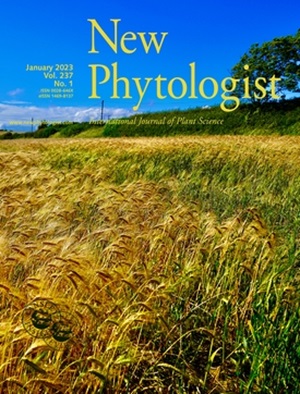Molecular fingerprints of cell size sensing and mating type differentiation in pennate diatoms
IF 8.3
1区 生物学
Q1 PLANT SCIENCES
引用次数: 0
Abstract
- A unique cell size-sensing mechanism is at the heart of the life cycle of diatoms. During population growth, cell size decreases until a sexual size threshold (SST) is reached, below which cells become sexually competent. In most pennate diatoms, the two mating types undergo biochemical and behavioral differentiation below the SST, although the molecular pathways underlying their size-dependent maturation remain unknown.
- Here, we developed a method to shorten the generation time of Cylindrotheca closterium through single-cell microsurgery, enabling the transcriptomic comparison of genetically identical large and undifferentiated cells with small, sexually competent cells for six different genotypes.
- We identified 21 genes upregulated in small cells regardless of their mating type, revealing how cells undergo specific transcriptional reprogramming when passing the SST. Furthermore, we revealed a size-regulated gene cluster with three mating type-specific genes susceptible to sex-inducing pheromones. In addition, comparative transcriptomics confirmed the shared mating type specificity of Mating-type Related Minus 2 homologs in three pennate diatoms, suggesting them to be part of a conserved partner recognition mechanism.
- This study sheds light on how diatoms acquire sexual competence in a strictly size-dependent manner, revealing a complex machinery underlying size-dependent maturation, mating behavior, and heterothally in pennate diatoms.
求助全文
约1分钟内获得全文
求助全文
来源期刊

New Phytologist
生物-植物科学
自引率
5.30%
发文量
728
期刊介绍:
New Phytologist is an international electronic journal published 24 times a year. It is owned by the New Phytologist Foundation, a non-profit-making charitable organization dedicated to promoting plant science. The journal publishes excellent, novel, rigorous, and timely research and scholarship in plant science and its applications. The articles cover topics in five sections: Physiology & Development, Environment, Interaction, Evolution, and Transformative Plant Biotechnology. These sections encompass intracellular processes, global environmental change, and encourage cross-disciplinary approaches. The journal recognizes the use of techniques from molecular and cell biology, functional genomics, modeling, and system-based approaches in plant science. Abstracting and Indexing Information for New Phytologist includes Academic Search, AgBiotech News & Information, Agroforestry Abstracts, Biochemistry & Biophysics Citation Index, Botanical Pesticides, CAB Abstracts®, Environment Index, Global Health, and Plant Breeding Abstracts, and others.
 求助内容:
求助内容: 应助结果提醒方式:
应助结果提醒方式:


